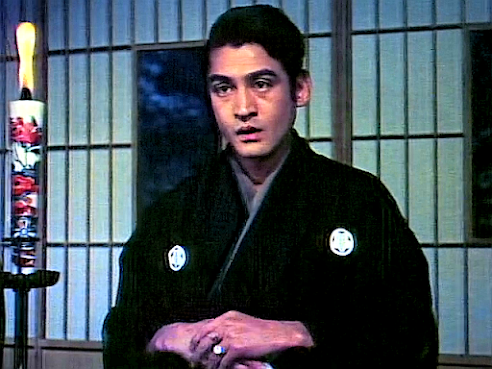Obscure Japanese Film #175
 |
| Jun Negami and Fujiko Yamamoto |
1890. Miya (Fujiko Yamamoto) is a young woman in love with her adopted brother, Kan’ichi (Jun Negami). The feeling is mutual and they plan to marry. However, Miya’s parents want her to marry the wealthy Tomiyama (Eiji Funakoshi) and persuade her that it’s in Kan’ichi’s best interests too as then they’ll be able to afford to send him abroad to study, which will greatly improve his prospects.
Four years later, Miya is trapped in a miserable marriage to Tomiyama who, knowing that he’s not loved, takes every opportunity to bully and humiliate his wife, while Kan’ichi has taken employment as a debt collector for a much-hated female moneylender, Akagashi (Mitsuko Mito), known as ‘Foxy Shark’. She has only given him a job because she wants to seduce him, and he finds himself in the position of having to demand repayment of loans from his former friends…
Based on an unfinished novel by Koyo Ozaki (1868-1903), the plot of this Daiei production must have seemed old hat even in 1954. In fact, there had been numerous silent versions* of the novel as well as previous talkies by Hiroshi Shimizu in 1937 and Masahiro Makino in 1948. The title seems intended to reference the supposed obsession with money which Kan'ichi develops in an attempt to fill his void, but it’s just one aspect of the story that – in this film, anyway – never really convinces and feels like a mere contrivance. Another is his determination to remain so unforgiving towards Miya. What really takes the biscuit though is the fact that these two estranged lovers end up living across the street from each other!
Otherwise, the film is quite well-made by director Koji Shima and the performances are good, with Mitsuko Mito clearly having the most fun as the lustful loan shark. It won the 1954 Asia Pacific Film Festival award for Best Film and received some distribution abroad, arguably at the expense of other, better films, but this is probably due to the fact that it was one of the earliest Japanese feature films to be made in colour. A lot of trouble was clearly taken to shoot scenes in picturesque settings, such as a field of cherry blossom trees, a moonlit beach and a lonely road at sunset. Unfortunately, the copy I saw looked like a poor VHS transfer and the colours were horrible, but I did have the feeling that it would probably look great in a good quality copy.
*A 1918 version cast future film director Teinosuke Kinugasa (a male) as Miya, while Kinuyo Tanaka played the role in a 1932 film.




No comments:
Post a Comment